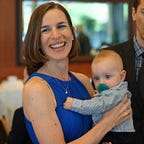I am 5 years out of fellowship (where does the time go!) and while caring for patients, I have been beat up and surprised enough times that I feel entitled to offer some unsolicited advice to my younger colleagues. Please consider it, and adopt it if it works for you. Sometimes, to help your patients most, you must do something non-intuitive: Nothing.
This is my advice. Do More Nothing.
Like many of you, I have a strong bias for action. I specialize in acute care surgery, trauma, and critical care. I will pursue a maximally invasive surgery without hesitation when that’s the right path.
What I’ve learned, though, is that the “right” path is more ambiguous than the standard teaching implies. I have made “right” decisions that turned out poorly in hindsight. I have predicted disaster in patients who went on to thrive, defying textbooks and standards of care. It is a mark of maturity in a physician to appreciate that ambiguity exists, and that Do More Nothing is a viable option. Embracing this can help you make decisions that better align with your patients’ values.
Especially with high risk or elderly patients, a huge operation is never a straightforward choice.
I treated a woman the other day who I will call Florence. She was nearly 90, lived independently with a part-time caregiver, enjoyed tending her garden, and had extended family nearby. Above all, she valued her quality of life. She was crystal clear that she would not want to pursue medical interventions if she could never return to this level of function.
Florence presented with mesenteric ischemia, an interruption of the blood flow to her intestine. If the interruption lasts long enough, the intestine dies. If the surgeon does not remove the dead intestine, the patient dies. (For Florence, there was no surgical option for unblocking the artery to restore blood flow).
The decision to operate here is not simple, but let’s simplify and use this framework:
Your job as a doctor is to help the patient understand the possible outcomes, and guide them to the choice that best aligns with what they value. If you are simply presenting your patient with a shopping list of choices and asking them to pick, you’re doing it wrong. They may choose a path with an idealized or impossible outcome in mind.
When I met Florence, she told me charming and engaging stories about her life. Her pain, which had been overwhelming a few hours earlier, had somewhat abated. But her abdominal exam and her labs were concerning — her bowel could be dying or dead already. An operation would be the only way to find out.
The textbook answer would be to operate on Florence. If we did not operate, we wouldn’t find out whether her bowel was alive or dead. If we left dead bowel inside her, she would die. But to help the patient make the best choice, I had to consider Do Nothing as a legitimate option.
To me, the choice was nuanced. It looked like this:
But to Florence, at first it felt more like this:
My task was to establish trust with Florence and her daughter, understand Florence’s values, and then help them both understand that we had a more nuanced choice to make.
Even with black-and-white outcomes in mind, Florence was hesitant to sign up for an operation. She had lived nearly 9 decades and maybe that was enough.
The daughter felt differently. Families can have a hard time choosing to Do Nothing. To give their loved one a chance, we must Do Something. More treatment feels inherently better. Doing Nothing means giving up.
As surgeons know well, in reality it’s not like that. Emergency surgery for the elderly often just adds suffering before death.
I helped the daughter understand the limitations of what surgery could do to save Florence. She would likely require multiple operations, spend time on a ventilator, become weak and dependent on others, and spend weeks in therapy to recover. If she survived, odds were she would go to a nursing home.
I also helped them understand that, in her case, the “no surgery” path had a chance of working. She might die, but she also might go home. Florence and her daughter were remarkable in their ability to accept this ambiguity. With full understanding, Florence chose the path that aligned with what she valued.
We admitted her to the hospital and gave her medical therapy, and no surgery. Regardless of the outcome, we approached the decision in the right way. I felt satisfied.
After the night I met Florence, I went off service and she remained in the care of my colleagues. I didn’t check in for a couple weeks. When I next came on service, I looked up Florence’s records, eager to find out what had happened. I was pleased to learn that she had an uneventful hospital course, recovered, and went home.
This discovery put a big smile on my face. Maybe Florence will get a few more years of the independent life she loves.
“Do More Nothing” is one of my clinical mantras. Use it when it’s right. Apply it for big decisions and small ones — it doesn’t have to be life and death. Your patients will benefit.
